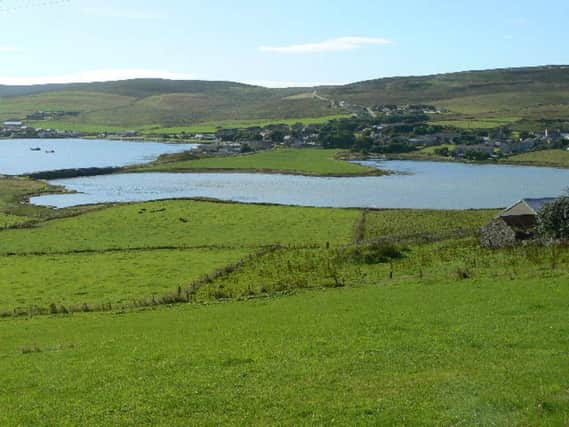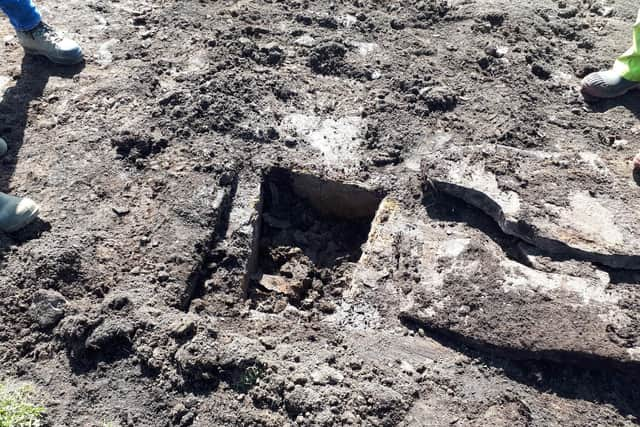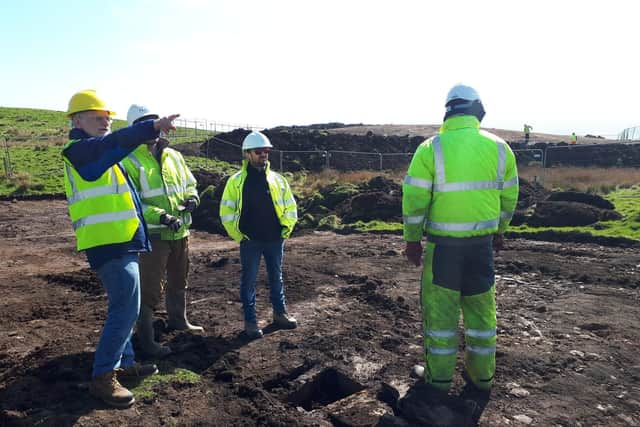Orkney Bronze Age burial site found on site of controversial electricity substation


A 3,500-year-old burial site has been found in Orkney as archaeological explorations get underway on land where a new controversial electricity substation is planned.
The Bronze Age burial cist was found by a team from ORCA Archaeology at the site of the proposed Finstown substation site, just below ground surface.
Advertisement
Hide AdAdvertisement
Hide AdThe stone-lined box capped with a large flat stone would likely have contained the remains of an individual who lived during the Bronze Age.


At first sight, the cist appeared empty but archaeologists believe some bone traces could be detected on closer analysis.
The burial was discovered by ORCA Archaeology as part of SSEN Transmission’s commitment to undertake environmental survey works ahead of construction, should the substation be approved.
Standing around the cist in perhaps the same position as mourners did 3,500 years ago, the ORCA Archaeology team met with SSEN Transmission to discuss the importance of the find and the next steps involved in excavation and recording, and the implications of the discovery for our understanding of how people lived and worked in the landscape.
Pete Higgins, Senior Project Manager ORCA Archaeology said, “Previous survey work told us there was significant archaeology present at the site and we are pleased that within the first few days we have our first major find.


" It is fascinating to think that we are the first people in 3,500 years to look into this structure. We are working with SSEN Transmission to record the archaeology of the site, and this is a great start.”
SSEN Transmission has submitted a planning application for the onshore substation near Finstown. The substation is a critical component of the proposed network reinforcement which is required to support renewable electricity generators across Orkney looking to connect to the main GB transmission system for the first time.
Its progress, as well as that of the reinforcement programme, remains subject to all planning and regulatory approvals. SSEN Transmission’s Environmental Project Manager, Simon Hall continues,
Advertisement
Hide AdAdvertisement
Hide Ad“As a responsible network operator, we take our environmental standards very seriously and strive to do everything we can to ensure that our proposed works minimise disruption and impact to our host communities, whilst meeting our License obligations.
“For this particular project, that includes working with local archaeological experts ORCA as part of our pre-construction assessments to fully understand the archaeological features and history at the Finstown site. We are delighted that it has resulted in the discovery of such an exciting feature that otherwise may never have been found. We look forward to continuing to work closely with ORCA as the excavation progresses.”
Earlier, Orkney Archaeological Society said undiscovered historic treasures could be harmed by the plans to upgrade energy transmission to and from the islands.
Martin Carruthers, chairman of OAS, said the project could impact on ‘an unknown but likely substantial’ quantity of unrecovered archaeology across Orkney.
Some on the island have called for as much of the cabling to be laid underground to limit the visual impact of the island.
Mr Carruthers said the society generally backed this position but added that this approach posed a particular problem for the preservation of archaeological remains.
SSEN Transmission said that several surveys had already been carried out at all proposed routes and sites given Orkney’s “vast, rich and highly significant archaeology.”